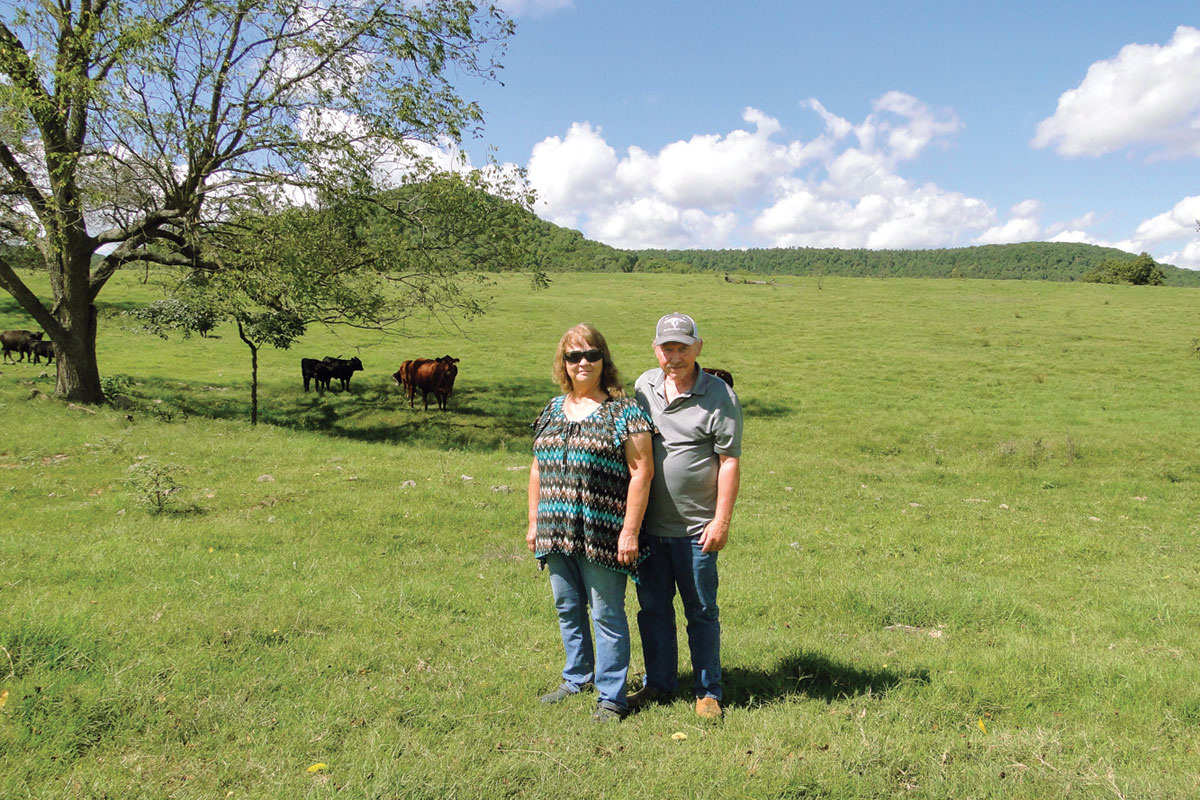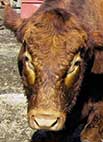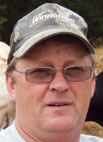
After transitioning solely to a cow/calf operation, Dale Logan is looking to a new market for his calves
Dale Logan has lived near Green Forest, Ark., all his life, in an area full of relatives and ancestors from multiple generations going back more than a 100 years. He is a lifetime farmer who has often declared, “Never got a paycheck in my life.”
Dale’s father, Denver Logan, bought the original acreage in 1954 from his wife Wanda’s grandfather.
Dale’s dad and one of his dad’s friend built the first Logan poultry house from timber Denver cut on his father’s farm. Dale was 2 years old and to keep the youngster occupied while his parents built the house, they gave him a hammer, nails and a board to pound the nails into, something intriguing for the youngster. Three years, later Dale can remember when a second house was built as Denver expanded his turkey business. Denver always raised turkeys that he purchased and raised, then sold on the open market to various companies. Processes were different than today when most poultry producers work under contract to a specific company who supplies the bird and feed while regulating conditions and procedures. The family had dairy cows when Dale was young. By the time Dale was in grade school, he in charge of bottle feeding calves before going to school.
“Back then cleanout meant heavy labor using a scoop shovel,” Dale recalled.”I was happy to see those days go.”
Dale underwent a divorce after a short marriage. In a discussion with his lawyer, his lawyer commented “There are plenty of fish in the sea and a good one sits up front.”
When the divorce was finalized, Dale went with Brenda to dinner to celebrate her birthday. The date was Dec. 16. They were married the following Jan. 7 in the lawyer’s office by a Justice of the Peace friend of that same lawyer. The couple have shared 35 happy years together so far. Shortly after their marriage, the open market raising of turkeys was ending. His parents had some over-the-road trucks and told Dale to do whatever he wanted with the poultry houses because they “were going to see the country.”
Without a turkey contract, Dale and Brenda switched to broilers. Then, in 2011, the chicken houses need a $300,000 upgrade. Denver had wanted Dale to quit chickens and to go to cattle only. Shortly after Denver passed, Dale and Brenda quit the broilers.
“I wasn’t sorry to see the chickens go,” Brenda admitted. “Cattle are more fun and less consistently time demanding.”
Denver had enjoyed backgrounding and retaining ownership until slaughter more than a cow/calf operation so he kept his cow/calf herd small, but purchased up to 1,000 head of calves annually. Dale castrated all of the bull calves, sometimes around 400 a year.
When Dale inherited his dad’s 400 acres, he switched to a totally cow/calf operation. He currently has 175 mostly Angus cross mommas, 25 bred heifers and seven bulls (two Herefords and five Angus). Some of the bulls are purebred, some are registered.
He switched to cow/calf because the feeder market in 2011 and 2012 seemed too risky, especially considering the drought at the time.
“Two years ago, I bought a young, really good heifer bull, but he got struck by lightning soon after I put him with some heifers,” Dale said. “That’s just one of those things that happens when you farm.”
Dale has both fall and spring calving so if a female misses one season, she has another chance in six months before “going to town.” Dale also culls rigorously for temperament.
“We’re getting older and taking chances makes no sense,” Brenda added.
Dale retains around 25 heifers a year for possible replacement. He culls those at weaning and again if they don’t reach a target weight of 750 pounds for breeding, which he views as a threshold to help with birthing issues.
Dale buys most of his hay. Because of the shortage and high prices this year, he is planning on feeding commodities to cut the need for hay. He has bought commodities to mix a ration in his mixer truck the same way his father started doing more than 40 years ago. The Logans are planning to take advantage of a new program to encourage out-of-state buyers to purchase feeder stock in Arkansas whose reputation, according to Dale, has been spotty in the past.
Some farmers do not sell calves truly ready for the feeder market, and the purpose of the program is to ensure buyers will be getting exactly what they are looking for. The new program is called “Go Green” and offered through the Extension Service.
These cattle receive a green tag indicating they come from an Arkansas Certified Beef Quality Assurance producer. The tag indicates the animals have documentation proving two rounds of vaccines. These calves have also been weaned at least 45 days, castrated, dehorned and healed up, as well as bunk broke and comfortable with drinking from a water tank.
Another indication of their forward thinking is their looking into a new type of supplemental drought insurance based upon a selection of two month periods at a predetermined location. Then the 10-year data, based monthly averages, is used to determine payout. If rain falls below those averages, the policy pays. It is sold by private companies and premiums are subsidized by the government.
“It’s crazy not to have a governmental grazing insurance policy. I have received more than I will ever pay out,” Dale said. “Drought insurance simply makes financial sense.”
Then he added, “My dad worked hard for the Carroll County Cattlemen’s Association and was on the executive committee of Arkansas Cattlemen’s Association and was a respected cattlemen. I’m trying to do my part by being on the county and state board as well.”






